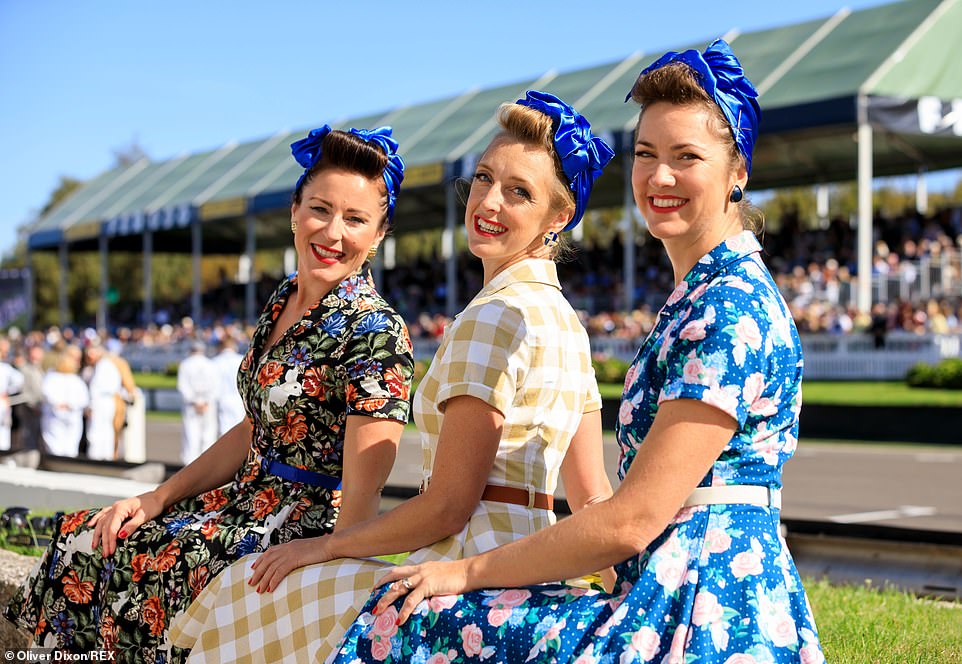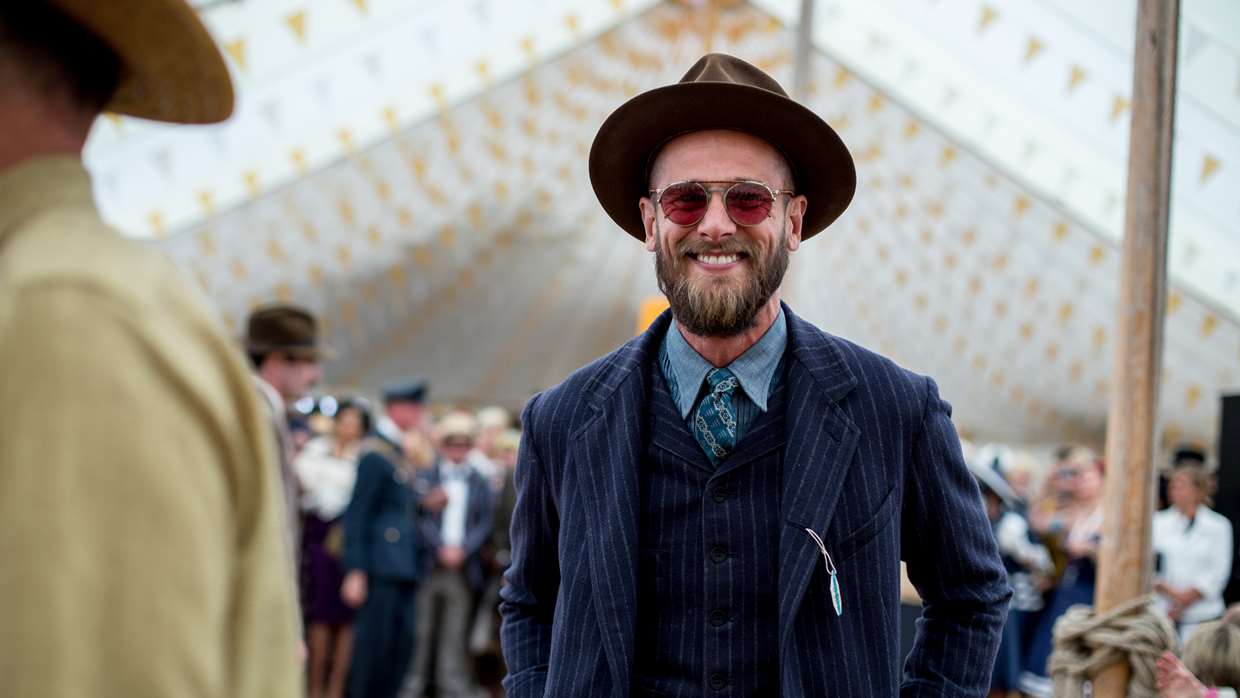Vintage Fashion Revival - Rediscovering Timeless Elegance
In recent years, there has been a noticeable resurgence in interest in vintage fashion revival. People are turning back to the elegance and charm of bygone eras, seeking out pieces that evoke a sense of timeless style.
Author:Elisa MuellerReviewer:James PierceFeb 19, 20241.2K Shares24.8K Views

In recent years, there has been a noticeable resurgence in interest in vintage fashion revival. People are turning back to the elegance and charm of bygone eras, seeking out pieces that evoke a sense of timeless style. This trend of rediscovering vintage fashion is not just about wearing old clothes; it's about embracing the sophistication and grace of a different time.
Historical Context Of Vintage Fashion
The historical context of vintage fashion encompasses a rich tapestry of cultural, social, and economic influences that have shaped the way people dress and express themselves throughout different time periods.
- Victorian era (1837-1901) -The Victorian era marked a period of strict social norms and rigid gender roles. Fashion was characterized by elaborate, structured garments for women, including corsets, hoop skirts, and bustles, while men typically wore tailored suits and top hats. The Industrial Revolution brought advancements in textile manufacturing, allowing for greater variety in fabrics and designs.
- Roaring twenties (1920s) -Following World War I, the 1920s brought about a dramatic shift in fashion. Women embraced liberation and rebellion against traditional norms, adopting shorter hemlines, looser silhouettes, and dropped waistlines in defiance of the corseted styles of the past. The era was also marked by the rise of Art Deco aesthetics and the emergence of iconic flapper fashion.
- Great depression (1930s) -The economic downturn of the 1930s greatly impacted fashion, leading to a focus on practicality and austerity. Garments were often made from cheaper materials, and silhouettes became more streamlined and tailored to conserve fabric. Utility clothing and make-do-and-mend practices became prevalent during this time of hardship.
- World war II (1939-1945) -The war years brought about further changes in fashion due to rationing and resource scarcity. Utility clothing regulations were enforced, leading to simplified designs and the use of alternative materials such as rayon and nylon. Women's fashion saw the rise of functional yet stylish garments, reflecting the wartime ethos of resilience and adaptability.
- Postwar period (1950s-1960s) -The postwar period marked a return to prosperity and a renewed interest in glamour and luxury. Women's fashion of the 1950s was characterized by full skirts, nipped-in waists, and feminine silhouettes, epitomized by iconic figures like Marilyn Monroe and Audrey Hepburn. The 1960s witnessed a revolution in youth culture and fashion, with the emergence of mod styles, psychedelic prints, and the iconic miniskirt.
- 1970s and 1980s -The 1970s saw a fusion of retro and bohemian influences, with trends such as bell-bottoms, platform shoes, and fringe detailing. Fashion in the 1980s was characterized by bold colors, exaggerated silhouettes, and the rise of designer labels and power dressing. Punk and new wave subcultures also emerged, challenging mainstream fashion with DIY aesthetics and anti-establishment attitudes.
- 1990s and 2000s - The 1990s brought about a mix of minimalism and streetwear influences, with trends such as grunge, oversized silhouettes, and minimalist chic. Fashion in the 2000s was characterized by a diverse range of styles, from the rise of luxury streetwear to the influence of celebrity culture and reality TV.
Understanding the historical context of vintage fashion provides insights into the evolution of styles, societal values, and cultural movements that continue to inspire contemporary fashion trends and interpretations.
Factors Driving The Vintage Fashion Revival
The revival of vintage fashion in recent years can be attributed to several key factors, each playing a significant role in reigniting interest in styles of the past. From the resurgence of nostalgia to sustainability concerns and the influence of social media, these factors have converged to fuel the popularity of vintage fashion among contemporary consumers.
- Nostalgia- One of the primary drivers of the vintage fashion revival is nostalgia. As society progresses rapidly, there is a longing for the simplicity and elegance of bygone eras. Vintage fashion allows individuals to connect with the past, whether it's the glamorous styles of the 1920s or the rebellious looks of the 1980s. Wearing vintage clothing evokes feelings of nostalgia and provides a sense of comfort in an increasingly fast-paced world.
- Unique style- Vintage fashion offers a distinct aesthetic that sets wearers apart from the mainstream. With an emphasis on individuality and self-expression, vintage clothing allows people to showcase their personal style in a way that is both timeless and unconventional. Whether it's a one-of-a-kind dress from the 1950s or a vintage band t-shirt from the 1970s, these pieces add character and flair to modern wardrobes.
- Sustainability- The rise of sustainable fashion has also contributed to the popularity of vintage clothing. As consumers become more aware of the environmental and ethical impact of fast fashion, many are turning to second-hand and vintage options as a more sustainable alternative. By purchasing pre-loved clothing, individuals can reduce their carbon footprint and support circular fashion practices, thereby extending the lifespan of garments and minimizing waste.
- Quality and craftsmanship- Vintage clothing is often prized for its superior quality and craftsmanship compared to mass-produced garments of today. Many vintage pieces were made with attention to detail and fine materials, resulting in clothing that stands the test of time. By investing in vintage fashion, consumers can acquire pieces that not only look stylish but also retain their integrity after years of wear.
- Social media and influencers- Social media platforms like Instagram and TikTok have played a significant role in popularizing vintage fashion. Influencers and style bloggers often showcase their vintage finds, inspiring their followers to explore thrift stores, flea markets, and online vintage shops. The accessibility of social media has democratized fashion, allowing individuals from all walks of life to participate in the vintage fashion movement and discover unique pieces that resonate with their personal style.
Vintage Fashion's Impact On Modern Design
Designers today are not only focused on the future but also drawing inspiration from the past. They are infusing modern designs with elements of vintage fashion, breathing new life into classic styles.
The iconic silhouettes of Christian Dior's New Look are making a stunning comeback, while the vibrant patterns of the '60s are finding their way into contemporary fashion. This fusion of nostalgia and innovation creates unforgettable moments on the runway, as if witnessing history being revived before our eyes.
In everyday fashion, vintage pieces allow for unique and personalized looks that express individuality. Mixing vintage clothing with modern staples and experimenting with accessories enables individuals to showcase their personal style.
Fashion becomes a form of self-expression, turning the streets into impromptu runways. Embracing vintage fashion empowers individuals to make a statement and assert their presence in the world of style.
Vintage Fashion Revival - FAQ
Why Is Vintage Fashion Making A Comeback?
In the fashion industry, luxury is no longer defined by a price tag. In a world where fast fashion and mass production once thrived, true luxury now lies with unique, different and handmade items - vintage clothing offers you that luxury.
Why Is Vintage So Popular Now?
A key and much-loved element is our nostalgia for the past, and the fact that each and every preserved piece of vintage clothing tells a story is a big winner - these items have been around on the planet for a long time and survived through many life experiences.
Why Is Vintage Better Than Modern?
It ensures a unique style and improved quality. Additionally, their quality is often far superior to today's fast fashion, as they're made to last. Not to mention, vintage clothing is extremely rare, meaning your wardrobe will be unique and individual to you.
Final Words
The vintage fashion revival is more than just a passing trend; it's a testament to the enduring allure of classic styles. By embracing vintage fashion, we not only pay homage to the past but also infuse our modern wardrobes with a sense of timeless elegance that will never go out of style.

Elisa Mueller
Author

James Pierce
Reviewer
Latest Articles
Popular Articles
